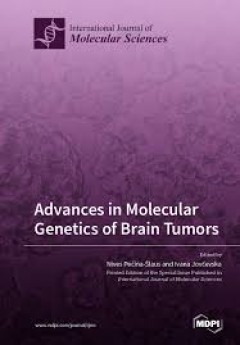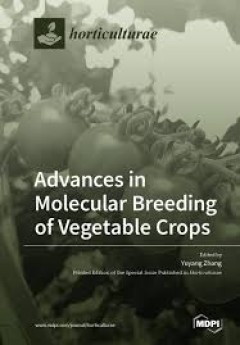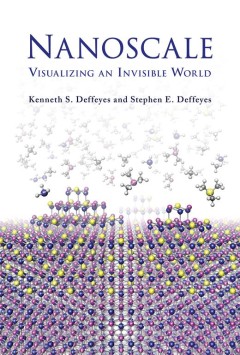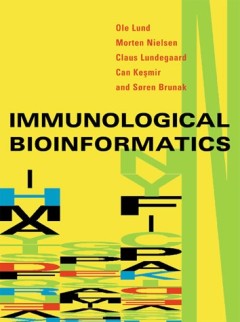Filter by

ACTH Action in the Adrenal Cortex: From Molecular Biology to Pathophysiology
By stimulating adrenal gland and corticosteroid synthesis, the adrenocorticotropic hormone (ACTH) plays a central role in response to stress. In this Research Topic, a particular attention has been given to the recent developments on adrenocortical zonation; the growth-promoting activities of ACTH; the various steps involved in acute and chronic regulation of steroid secretion by ACTH, includin…
- Edition
- -
- ISBN/ISSN
- 9782889452323
- Collation
- oer.unej.ac.id
- Series Title
- -
- Call Number
- -

Advances in Molecular Retrovirology
Retroviruses consist of a varied family of enveloped RNA viruses with positive-sense RNAs that replicate in a host cell through the process of reverse transcription. Retrovirus‐ es belong to the Retroviridae family that typically carries their genetic material in the form of ribonucleic acid, while the genetic material of their hosts is in the form of deoxy‐ ribonucleic acid
- Edition
- -
- ISBN/ISSN
- 9789535122616
- Collation
- 202
- Series Title
- -
- Call Number
- -

Advances in Molecular Genetics of Brain Tumors
Deregulation of signalling pathways that regulate cell growth, survival, metabolism, and migration can frequently lead to the progression of cancer. Brain tumours are a large group of malignancies characterised by inter- and intratumoral heterogeneity, with glioblastoma (GBM) being the most aggressive and fatal. The present study aimed to characterise the expression of cancer pathway-relate…
- Edition
- -
- ISBN/ISSN
- 9783036566443
- Collation
- 242
- Series Title
- -
- Call Number
- -

Advances in Molecular Breeding of Vegetable Crops
Molecular vegetable breeding has been progressed intensively in recent years. Huge advances have been made in germplasm evaluation, gene isolation, plant transformation, gene editing and molecular-marker-assisted breeding. The goal of this Special Issue is to highlight, through selected works, frontier research from basic to applied molecular vegetable breeding
- Edition
- -
- ISBN/ISSN
- 9783036557892
- Collation
- 242
- Series Title
- -
- Call Number
- -

Atomic Physics for Everyone = An Introduction to Atomic Physics, Quantum Mech…
This open access textbook introduces beginning undergraduate students and high school students to the world of quantum mechanics and atomic spectroscopy. Requiring no previous knowledge of physics and no math beyond basic algebra and sines and cosines, this book focuses on concepts to make the excitement of atomic physics more accessible for learners than ever before. It comes replete with lea…
- Edition
- 1
- ISBN/ISSN
- 9783031695070
- Collation
- XIII, 263 hlm; ill., lamp.,
- Series Title
- -
- Call Number
- -

Proceedings of the 8th International Conference on Attosecond Science and Tec…
This open access volume brings together selected papers from the 8th International Conference on Attosecond Science and Technology. The contributions within represent the latest advances in attosecond science, covering recent progress in ultrafast electron dynamics in atoms, molecules, clusters, surfaces, solids, nanostructures and plasmas, as well as the generation of sub-femtosecond XUV and X…
- Edition
- 1
- ISBN/ISSN
- 9783031479380
- Collation
- XIX, 220
- Series Title
- -
- Call Number
- -

Nanoscale: Visualizing an Invisible World
The world is made up of structures too small to see with the naked eye, too small to see even with an electron microscope. Einstein established the reality of atoms and molecules in the early 1900s. How can we see a world measured in fractions of nanometers? (Most atoms are less than one nanometer, less than one-billionth of a meter, in diameter.) This beautiful and fascinating book gives us a …
- Edition
- -
- ISBN/ISSN
- 9780262322522
- Collation
- -
- Series Title
- -
- Call Number
- -

Artificial Chemistries
The field of Artificial life (ALife) is now firmly established in the scientific world, but it has yet to achieve one of its original goals: an understanding of the emergence of life on Earth. The new field of artificial chemistries draws from chemistry, biology, computer science, mathematics, and other disciplines to work toward that goal. For if, as it has been argued, life emerged from pirmi…
- Edition
- -
- ISBN/ISSN
- 9780262329460
- Collation
- 1 online resource (xv, 555 pages) :illustrations (some color)
- Series Title
- -
- Call Number
- -

Gene regulation and metabolism : postgenomic computational approaches
As exciting as the new field of genomics is, it has not yet produced a basic conceptual change in biology. The fundamental problems remain: the origin of life, cell organization, the pathways of differentiation, aging, and the molecular and cellular capabilities of the brain. What has occurred is an explosion of molecular information obtained by genomic sequences, which will soon be followed by…
- Edition
- -
- ISBN/ISSN
- 9780262270649
- Collation
- 1 online resource (x, 310 pages) : illustrations.
- Series Title
- -
- Call Number
- 570 GEN

Immunological bioinformatics
"This book offers a description of bioinformatics techniques as they are applied to immunology, including a succinct account of the main biological concepts for students and researchers with backgrounds in mathematics, statistics, and computer science as well as explanations of the new data-driven algorithms in the context of biological data that will be useful of immunologists, biologists, and…
- Edition
- -
- ISBN/ISSN
- 9780262323338
- Collation
- 1 online resource (xii, 296 pages, 24 unnumbered pages of plates) : illustrations (some color).
- Series Title
- Computational Molecular Biology
- Call Number
- 001 LUN i
 Computer Science, Information & General Works
Computer Science, Information & General Works  Philosophy & Psychology
Philosophy & Psychology  Religion
Religion  Social Sciences
Social Sciences  Language
Language  Pure Science
Pure Science  Applied Sciences
Applied Sciences  Art & Recreation
Art & Recreation  Literature
Literature  History & Geography
History & Geography